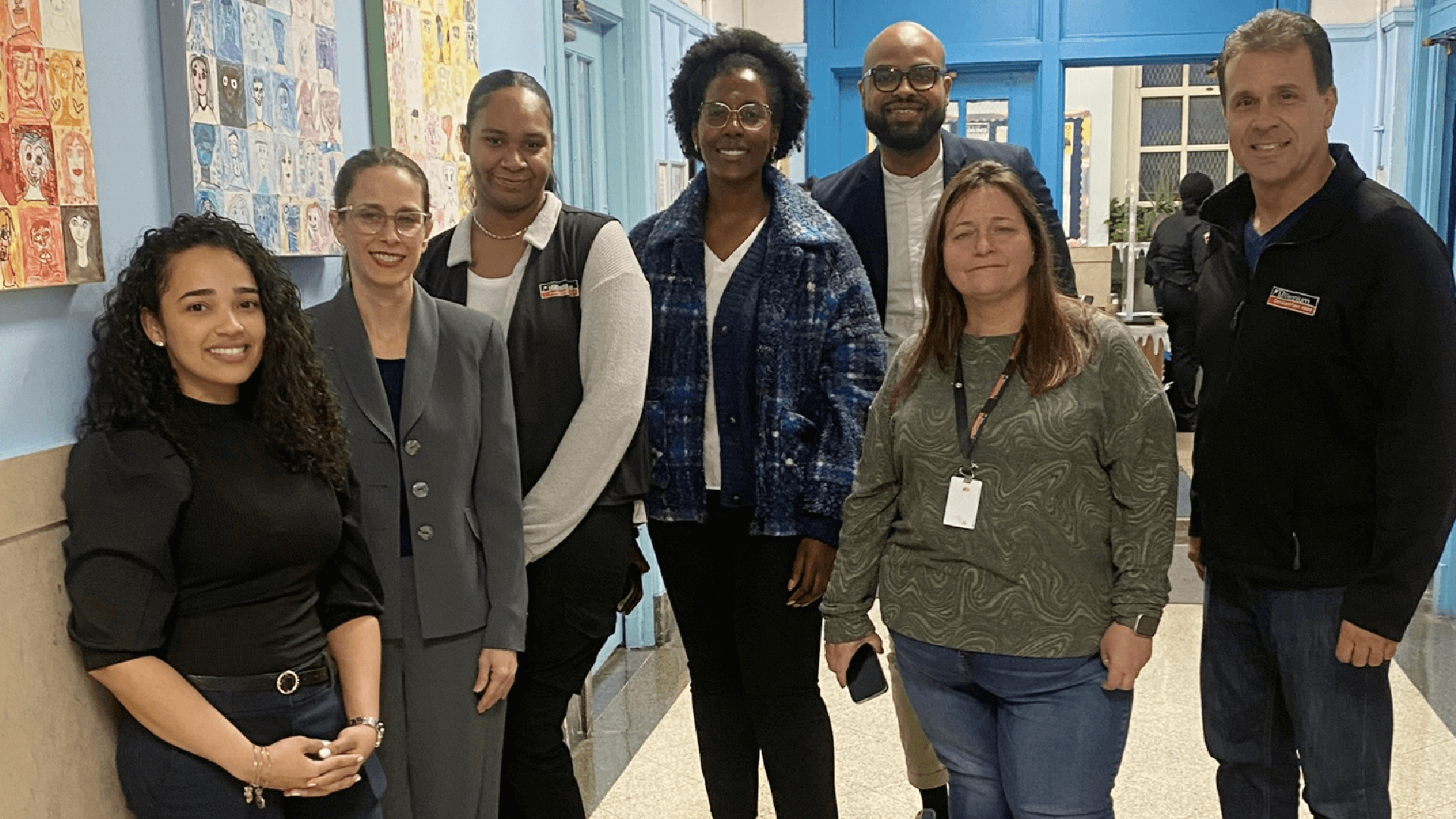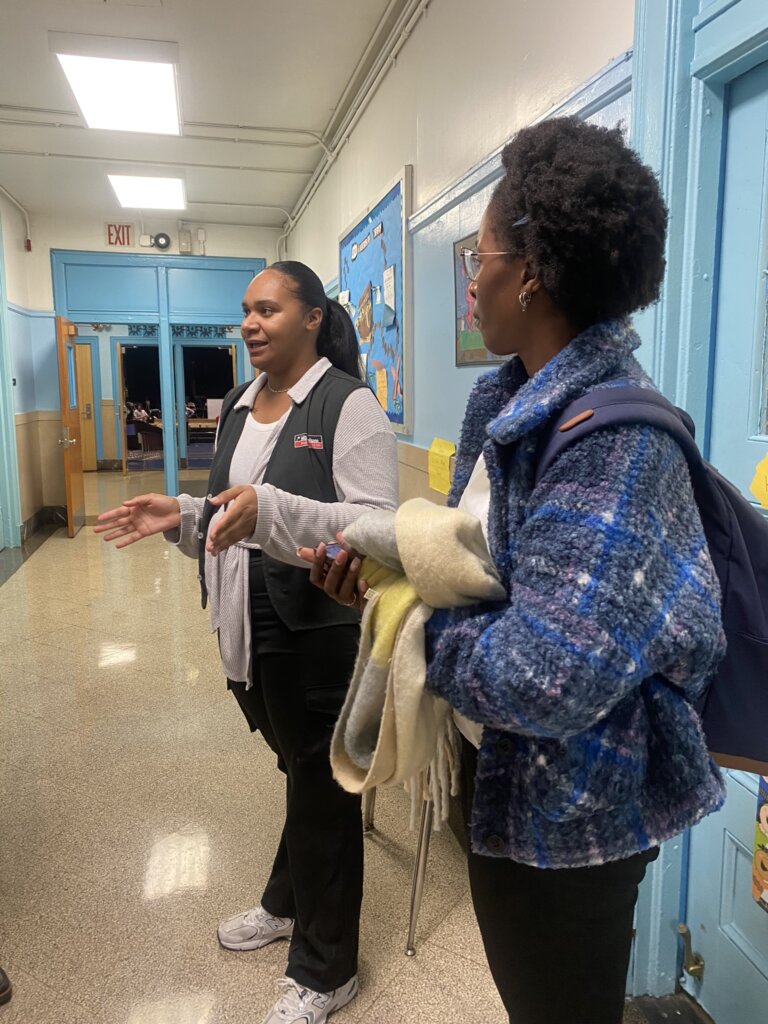
Marleny Polanco, Program Manager at ExpandED Schools;
Theresa Olivieri, Principal of PS 222;
Jasmine Saunders, Site Director at Millennium Development;
Saye Joseph, Chief of Staff for Councilwoman Mercedes Narcisse;
Shawn Jean-Louis, Policy Director at ExpandED Schools;
Stacey Dunn, Supervisor at Millennium Development;
Paul Curiale, Executive Director of Millennium Development
Recently, Saye Joseph, Chief of Staff for Councilmember Mercedes Narcisse and I visited P.S. 222K in Brooklyn. We toured the school and witnessed the vibrant afterschool programming provided by Millennium Development, our longstanding partner that has been serving the community since 1993. The students played games such as Jeopardy and vibrantly participated in spirited, healthy competition during a math bee. The energy in the building was contagious, making it a memorable and inspiring visit.
We thank Councilmember Narcisse and other Council members who visit programs and pledge their commitment to preserving funding for our City’s young people.
However, the future of programs like these is uncertain given the City’s broad Program to Eliminate the Gap (PEG) and the sunsetting of federal dollars. In addition to the over $600 million in cuts to education and youth programs explicitly listed in the November Financial Plan for FY24, numerous other education programs are at risk. Following the onset of the pandemic, New York City Public Schools (NYCPS) utilized approximately $1 billion per year in temporary federal COVID-19 relief funds for essential long-term programs that will continue to be necessary. These programs/initiatives include 3-K, preschool special education, clinical mental health services, community schools, and more.
Programs like Millennium Development often rely on supplemental funding acquired via subgrants from ExpandED Schools to fill gaps and support needs such as staffing, increasing student enrollment, and student wellness. Therefore, the NYC Council’s investment in afterschool, through Citywide Discretionary allocations to ExpandED Schools continues to be essential. In FY 24 that investment totaled $5.55M, $4.0 from the Afterschool Enrichment Initiative where DYCD is the distributing agency and $1.55M from the Educational Programs for Students Initiative where NYCPS is the distributing agency.
However, these investments are not enough to replace or mitigate the impact of the loss of funds that is to come. It is critical for our city and state leaders to develop and communicate a comprehensive plan whereby new and/or additional revenue streams can be tapped to maintain the integrity of our city’s educational infrastructure.
Cuts of this magnitude to agencies such as NYCPS and the Department of Youth and Community Development (DYCD) would be disastrous. There are some early signs that the City’s leadership understands that. The PEG to Community Schools ($10M in FY24) was recently reversed and the City is investing local dollars to support the continuation of NYCPS’ side of the Summer Rising model. However, there is more work to do.
Afterschool programs are a vital investment in the academic and social/emotional development of young people. These programs play a crucial role in supporting working families by offering a dependable environment for children while guardians are at work. Cutting funding for these and other programs including community schools, summer enrichment, and early childhood education may force families into challenging decisions.

Jasmine Saunders, the site director at PS 222, emphasized the diverse benefits they provide, including homework help and STEM programs. These offerings are especially valuable for working families who depend on afterschool programs to ensure their children have enriching activities after school hours.
It is time for all of us—those in the education sector, families, human service providers, and schools—to unite. The future of our educational landscape hinges on community collaboration. Reach out to your local City Council member or state representative to emphasize the urgency of this matter. Let’s work together to ensure that the legacy of resilience and progress in New York City Public Schools continues as we strive to establish a City of equitable opportunity.
